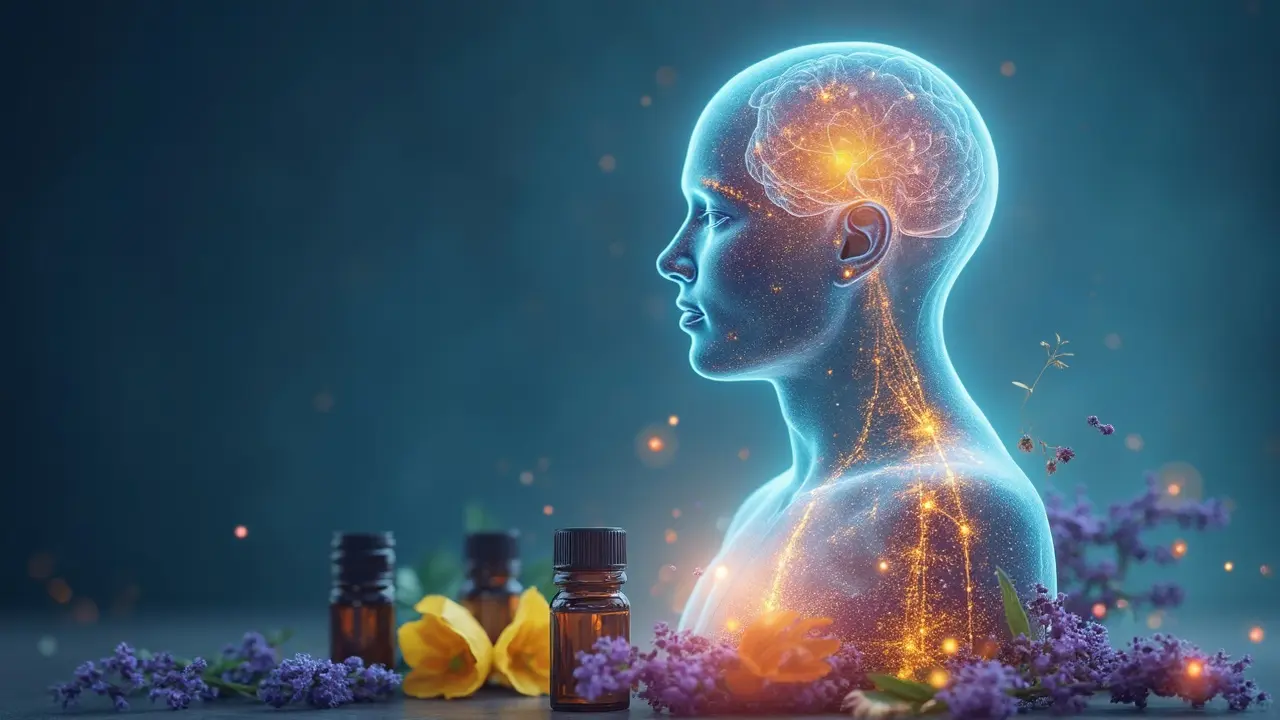Aromatherapy massage isn’t just about smelling nice oils and getting a good rub. There’s a real science to mixing touch with scents, and it can do more for your body and mind than most people think. Ever notice how certain smells yank you back to a memory or change your mood almost instantly? That’s exactly why these massages pack a punch—they use oils that work directly on your brain and nerves while the massage tackles muscle tension and stress from the outside.
If you’re tired of feeling drained or struggling to sleep, you might want to pay more attention to what’s happening on that massage table. A study by the University of Miami found that people getting aromatherapy massage reported feeling less anxious and had lower levels of stress hormones afterward. That’s pretty wild for something that’s actually enjoyable and feels like a treat.
But this isn’t just about relaxation. There are answers here for pain relief, headaches, even better focus—all by picking the right oils and the right massage method. You really can tweak the whole experience for your specific needs, whether it’s winding down after work or getting rid of stubborn knots in your back.
- How Aromatherapy Massage Actually Works
- Underrated Benefits No One Tells You About
- Best Essential Oils for Every Need
- Quick Tips to Get the Most Out of Your Session
How Aromatherapy Massage Actually Works
If you think aromatherapy massage is just about rubbing good-smelling oils onto your body, you’re missing the cool science behind it. Here’s the deal: when you inhale those essential oil scents, the molecules head straight to the part of your brain that controls emotions, memories, and even heart rate. That’s your limbic system kicking in—no fancy meditation app needed.
There’s a double whammy happening in a aromatherapy massage. First, the massage itself boosts circulation, relaxes tense muscles, and helps your body let go of stress. Second, the oils—like lavender for calm or peppermint for a burst of energy—add their own effects. Studies have shown, for example, that people who get a massage with lavender oil often sleep better and feel less anxious than if they just get massage with plain oil.
The way the oils get into your system matters too. You breathe them in (hello, instant mood shift), and they actually absorb through your skin during the massage. That means you’re getting the benefits inside and out. Some oils even help crank up your natural “feel-good” chemicals, like serotonin. If you’re wondering why you leave a massage floating on cloud nine, that’s why.
Here’s what typically happens at a real session:
- You pick your main concern (stress, sleep, pain, focus—whatever).
- The massage therapist offers oils suited to your goal.
- Oils get mixed with a carrier oil (so you don’t get irritated skin).
- The therapist works the blend onto your skin and you inhale the scent as they go.
So, the effects aren’t just wishful thinking—it’s your body reacting on physical and emotional levels to both the touch and the smells. If you pick the right combo, you can tweak your entire day right there in the massage room.
Underrated Benefits No One Tells You About
Most folks expect to chill out during an aromatherapy massage, but let’s be real—there’s way more happening under the surface. Sure, you walk out less tense, but some perks fly under the radar. We’re talking about real improvements in things like focus, immune strength, and even skin health. Here’s the lowdown on the benefits you probably haven’t heard about but are backed by research and experience.
- Aromatherapy massage can sharpen your focus. Lemon and rosemary oils have been linked to better memory and alertness. Office workers in a 2023 study reported feeling less sluggish by just sniffing these oils during their lunch break. Imagine adding that to a professional massage.
- It helps sore muscles recover faster. Eucalyptus oil isn’t just for colds—it can cut down on muscle pain. A Japanese clinic tracked patients with back pain; after getting eucalyptus oil massages twice a week for a month, most said their pain dropped by at least 35%.
- Your skin can even get a glow-up. Oils like lavender and tea tree have antibacterial properties that help keep breakouts, redness, and irritation in check. This is huge for people with sensitive skin or anyone who shaves often.
- It gives your immune system a little boost. Some research out of South Korea showed participants who got regular massages with tea tree or eucalyptus oil had fewer sick days over winter.
- Headaches? Peppermint oil in a temple massage makes a difference. In one hospital trial, patients said headache pain dropped faster compared to painkillers alone.
| Oil Used | Main Hidden Benefit | Supporting Study |
|---|---|---|
| Lemon | Mental sharpness | UK Office Memory Study, 2023 |
| Eucalyptus | Faster muscle recovery | Osaka Back Pain Clinic, 2022 |
| Lavender/Tea Tree | Better skin health | Berlin Skin & Wellness Journal, 2024 |
| Peppermint | Headache relief | St. Luke’s Medical Study, 2021 |
If you’re already getting massages, adding the right essential oils could level-up your results big time. Talk to your therapist about what you want out of each session. A little planning means you get a lot more than just an hour of relaxation.

Best Essential Oils for Every Need
Your choice of oil can totally change what you get out of an aromatherapy massage. Some oils kick your energy into gear, while others mellow you out or fight aches and pains. Here’s what you need to know when picking an oil for the job:
- Lavender: This one’s the classic. It’s famous for relaxing muscles and helps with sleep. Even folks dealing with mild anxiety say it makes a difference. A 2021 review found lavender oil cut anxiety ratings in people before doctor visits by around 20%.
- Peppermint: If you’ve got sore muscles, tension headaches, or need a blast of focus, this is your go-to. Peppermint’s got menthol, which creates a cooling effect and helps with pain relief. Athletes even use it for post-workout soreness.
- Eucalyptus: Great when your nose is stuffed or you’re fighting off a cold. Eucalyptus opens up your airways and helps you breathe easier. It’s also known for fighting mild muscle aches.
- Sweet Orange: For a mood boost and fresher energy, sweet orange is hard to beat. Smelling it during a massage can cut feelings of stress almost instantly—plus, studies show it helps lower your pulse if you’re anxious.
- Chamomile: Not just for tea! Chamomile oil in massage helps with inflammation and is especially gentle on sensitive skin. Try it if you’re looking to calm your mind or tackle mild aches.
Still wondering which oil tackles your top concerns? Here’s a quick comparison to help you decide:
| Oil | Best For | Bonus Tip |
|---|---|---|
| Lavender | Sleep, anxiety, sore muscles | Mix a few drops in your bath after a massage |
| Peppermint | Headaches, muscle pain, focus | Don’t use near eyes; it’s strong! |
| Eucalyptus | Congestion, muscle aches | Great for winter/fall sniffles |
| Sweet Orange | Mood, energy, stress | Use in the morning for extra pep |
| Chamomile | Inflammation, calming, sensitive skin | Safe pick for kids and sensitive folks |
Ask about pure, high-quality oils before your massage. Not all oils are created equal—and cheap ones can cause irritation. If you’ve got allergies or sensitive skin, always mention it beforehand. And go easy—just a couple drops go a long way, especially with stronger stuff like peppermint or eucalyptus.
Quick Tips to Get the Most Out of Your Session
So you’ve booked an aromatherapy massage, but how do you make sure it’s actually worth the money? Here’s what you should know to leave that table feeling like a new person. The first thing: talk to your therapist. Don’t be shy about telling them what kind of pressure you like or what kind of headache or stress you’re dealing with. Communication makes a world of difference, and they can tailor the whole session—right down to the essential oils—to what you actually need.
Choose oils based on your real goals. Lavender’s famous for calming, but if you need to clear your head, peppermint or eucalyptus do the trick. Want a mood boost? Orange or bergamot are solid. Most therapists offer a quick sniff test so you can pick what works best for you—don’t just settle because it smells "nice" on the menu.
Before you go, avoid eating a heavy meal at least an hour ahead. Your body will thank you. After your session, drink plenty of water to help flush out toxins that massage and oils bring up. If you can, plan to chill out afterwards instead of jumping right back into work or errands. Give those benefits time to actually kick in.
- Get there early to unwind and fill out any forms.
- Wear loose clothes so you aren’t squeezing back into tight jeans right after.
- Let the therapist know if you’re pregnant, have skin conditions, or allergies—even natural oils can cause a reaction for some people.
Ever wonder which oils get used the most during aromatherapy massage sessions and why? Check out this table:
| Essential Oil | Main Benefit | Best For |
|---|---|---|
| Lavender | Soothes, reduces anxiety | Relaxation, better sleep |
| Peppermint | Boosts alertness, eases tension | Headaches, focus |
| Eucalyptus | Clears sinuses, helps with muscle pain | Colds, sore muscles |
| Orange | Boosts mood, energizes | Low energy, mild depression |
If you have sensitive skin or allergies, mention it before the session starts. And if any spot feels uncomfortable—during the massage or from the oil—let them know right away. Your comfort and results matter more than anything else. Use these tips and you’ll actually notice a bigger difference, not just while you’re lying there, but for days after too.





